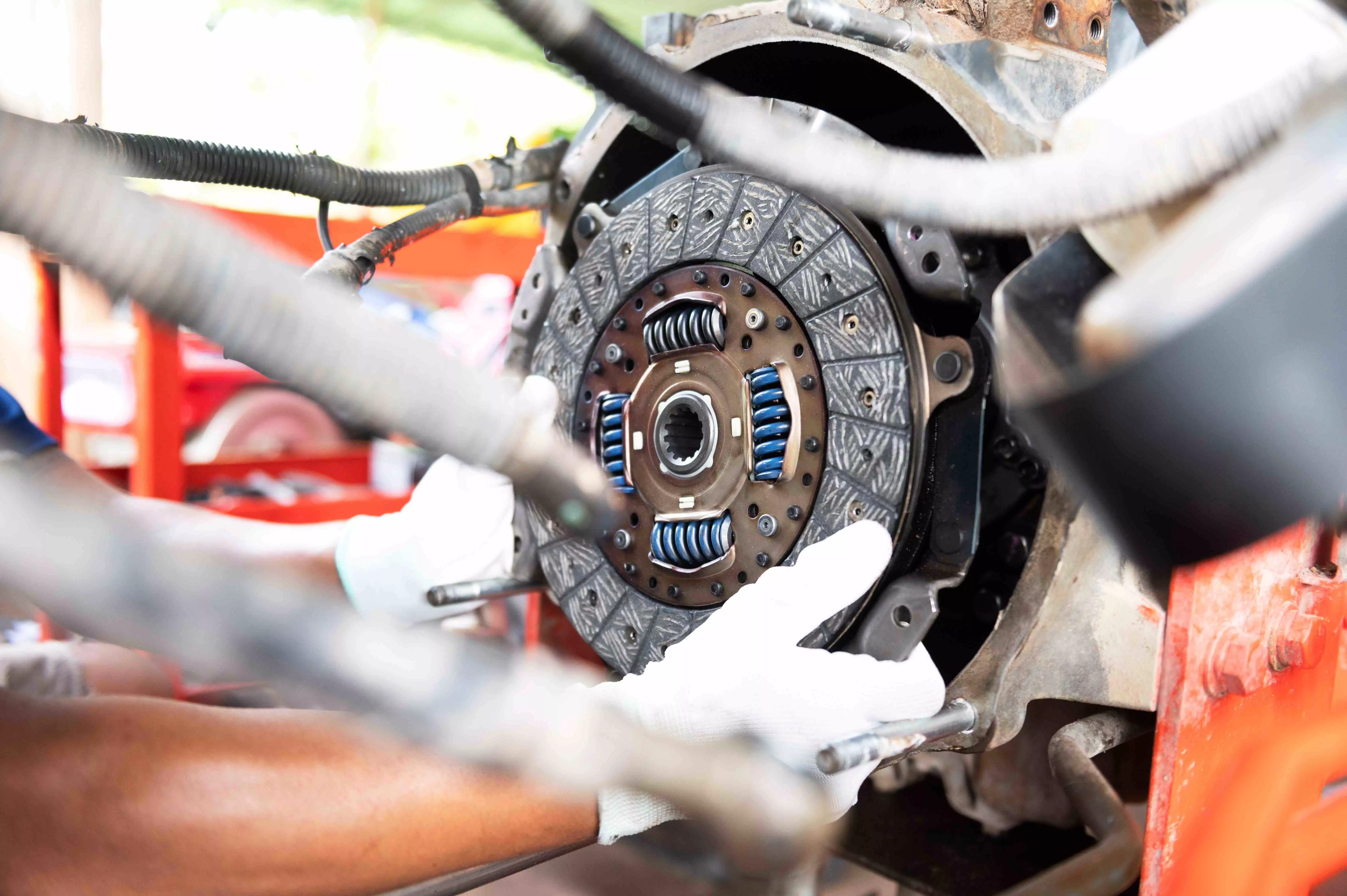
Clutch repair costs tend to be expensive, but understanding the reasons behind the high prices can help you avoid unexpected bills.
We'll take an in-depth look at the clutch components and common problems that can occur, as well as offer some tips on how to keep the cost down.
How a clutch works
The clutch system takes power from the engine and delivers it to your gearbox, which in turn delivers it to your wheels. It comprises several components, including the disc, pressure plate, and flywheel. The forces involved place the clutch under great stress, especially when you consider that even at idle, your engine and consequently the flywheel (the bit the clutch grabs on to) are spinning at around 1,000rpm.
It's at its happiest when your foot is off the clutch pedal, or when your foot is pressing it all the way down; it’s either clamped between engine and gearbox or spinning freely respectively.
Hold the pedal halfway though, and you’re effectively allowing the clutch and flywheel to spin at different speeds, which grinds away the clutch. That’s what people mean when they say you’re riding the clutch.
Over time, these parts can wear out, causing the clutch to slip, shudder, or fail to engage properly. In addition, other factors such as driving habits, environmental conditions, and the quality of replacement parts can also affect the longevity of the system.
When does a clutch need to be replaced?
What's that burning smell?! Drive a high-mileage car that's still on its original clutch up a long, steep hill in a high gear and chances are you'll notice a burning, earthy odour. If there is even a little bit of slip going on, you’ll smell it.
New clutches don’t tend to give off bad smells, but can still slip. You’ll know if your clutch is slipping because the car simply won’t move, or it will, but very slowly and while the engine is spinning at about 5,000rpm.
Can it be adjusted?
Modern cars tend to use a slave cylinder and a hydraulic clutch. These are self-adjusting as the clutch wears, so there's nothing that can be done when the clutch starts to slip apart from change it.
Old models are fitted with a clutch lever and cable, in a system that allows for adjustment at regular intervals. In fact it demands it to avoid slippage as these will naturally go out of adjustment over time as components wear or stretch. So you can see why this tech has been replaced by the self-adjusting clutch.

Clutch repair cost
Labour costs can make up a significant portion of the overall price. This is because the process involves removing the transmission from the vehicle, disassembling the clutch system, and replacing any worn or damaged components. Additionally, if the flywheel needs to be resurfaced or replaced, this can add to the overall cost.
As such, it may mean the engine has to be lifted, or dropped lower depending on the car, to make enough space to crack the gearbox and engine apart. This takes time.
How much will a new clutch cost, then? A typical clutch replacement at a garage will be £400-£500, but could be closer to £1000 for premium brands.
On rear-wheel-drive cars, because the engine and gearbox run longitudinally, it’s a case of jacking the car up, removing the propshaft, unbolting the gearbox, yanking out the old clutch, fitting a new one and then screwing it all back together. Simple. Still a good day’s labour, but simple.
If your car is front-wheel drive, the chances are (unless you drive an old Audi A4) the engine is transverse, meaning it sits sideways across the engine bay rather than front to back.
That means everything is crammed into a much smaller space, so it’s a lot harder to work on. It could be double the time of a clutch change in a rear-wheel-drive car.
So, if your clutch does go, don’t get annoyed thinking the garage is trying to pull the wool over your eyes. It’s a big, labour-intensive job.
Just have a look under your bonnet and ponder on how you’d get at the clutch yourself!
How can I keep costs down?
Every Haynes Manual will show you how to replace the clutch system yourself, which will save you having to pay a garage's labour fees. Bear in mind that it's a time-consuming process and that you need the right tools for the job.
Once the new clutch (and possibly a new flywheel) is in place, it is important to practice good driving habits, such as avoiding excessive slipping.
Regular maintenance, such as replacing the clutch fluid and inspecting the system for wear, can also help prolong its lifespan.